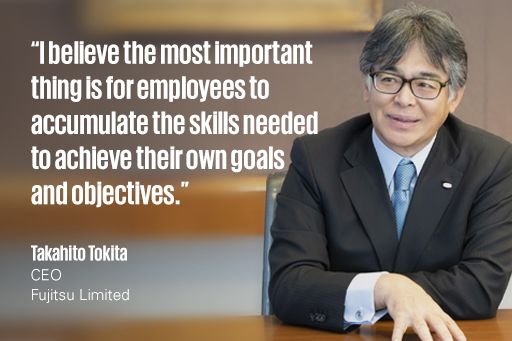have implemented or plan to implement a hiring freeze in the next 6 months
Talent a top operational priority
How CEOs support and attract talent is changing because of the challenging global economy and CEOs’ growth goals. The employee value proposition to attract and retain the necessary talent is tied as the top operational priority to achieving their 3-year growth objectives (25 percent, up from 19 percent in 2021). As well, two-thirds of CEOs (71 percent) agree the ability to retain talent with the pressures of inflation/rising cost of living are top of mind, as are the long-term impacts to organizations from the pandemic and geopolitical tensions.
A business’s ESG approach is increasingly seen as a differentiator when it comes to attracting and retaining talent. Of the CEOs that mentioned they were seeing significant demand for greater ESG transparency and reporting, 26 percent noted the biggest demand was coming from employees and new hires. They also note that one of the primary downsides to not meeting ESG expectations is recruitment challenges (22 percent), right behind the ability to raise financing.
Nicola Downing, CEO of Ricoh Europe, says having the right people with the best skills is integral to Ricoh’s vision and strategy for the future. “We have had an opportunity to really focus on our employees — to be more open and honest about subjects including mental health and wellbeing. We’ve invested in training our people, pushing for change and updating skills to match our new innovations, digital service portfolio and changing customer needs. We want our people to move with us. The skills our team needs today have seen a significant shift versus our original plans. That's because the challenges facing global business, and the pace of change and transformation, have rapidly increased.”


Top operational priorities to achieve growth objectives over the next 3 years
Source: KPMG 2022 CEO Outlook
Recession driving talent freezes
With a recession looming, there’s a significant short-term emphasis on hiring freezes and headcount reductions: 39 percent of CEOs have already implemented a hiring freeze, and 46 percent are considering downsizing their workforce over the next 6 months. But when CEOs take a longer-term view, 79 percent expect their organization’s headcount to increase over the next 3 years, and CEOs are still investing in their existing workforce, with half currently focused on boosting productivity.
Preparing for an anticipated recession
have considered or will consider downsizing their employee base in the next 6 months
Source: KPMG 2022 CEO Outlook
Fostering a spirit of experimentation
Hybrid/remote working has had a positive impact on hiring, collaboration and productivity over the past 2 years. However, many multinational organizations are launching return-to-office plans to usher in a “return to normal”, and 65 percent of CEOs envision in-office as the go-to office environment in 3 years’ time (with 28 percent saying hybrid and 7 percent fully remote). Employee expectations when it comes to remote work are evolving, so it’s important for CEOs to develop a better working structure that suits their people in what is still an emerging area.
Even if the supply-demand side of labor shifts in favor of businesses (giving managers more scope to insist on being in-office), CEOs need to make sure their people have purposeful interactions. How do CEOs define what an optimal structure looks like? Now is the time to experiment and see what works best. Active listening, empathetic communications and a commitment to finding the right balance over the long term will be key.
Ideal working environment over the next 3 years
7% Fully remote
28% Hybrid
65% In-office
1% N/A
Source: KPMG 2022 CEO Outlook


Exploring opportunities for growth
- Experiment with ways of working: As organizations launch return-to-office plans, it’s important for CEOs to develop working structures that suit their people. It’s time to experiment and see what works best. Active listening, empathetic communications and a commitment to finding the right balance over the long term will be key.
- Tell your ESG story: A business’s ESG approach is increasingly seen as a differentiator when it comes to attracting and retaining talent. And with many CEOs saying they’re struggling to tell a compelling ESG story, it’s important for CEOs to articulate for stakeholders the steps they’re taking to address ESG in their organizations.
- Build, don't follow: Organizations and their employees are changing and leaders need to reinvent the enterprise workforce. The old talent management playbooks are out of date, and the challenge is that there aren’t new ones to replace them — yet. The way forward involves strategies that include reinventing the workforce, focusing on the social side of ESG, leveraging analytics and designing a nurturing experience.

